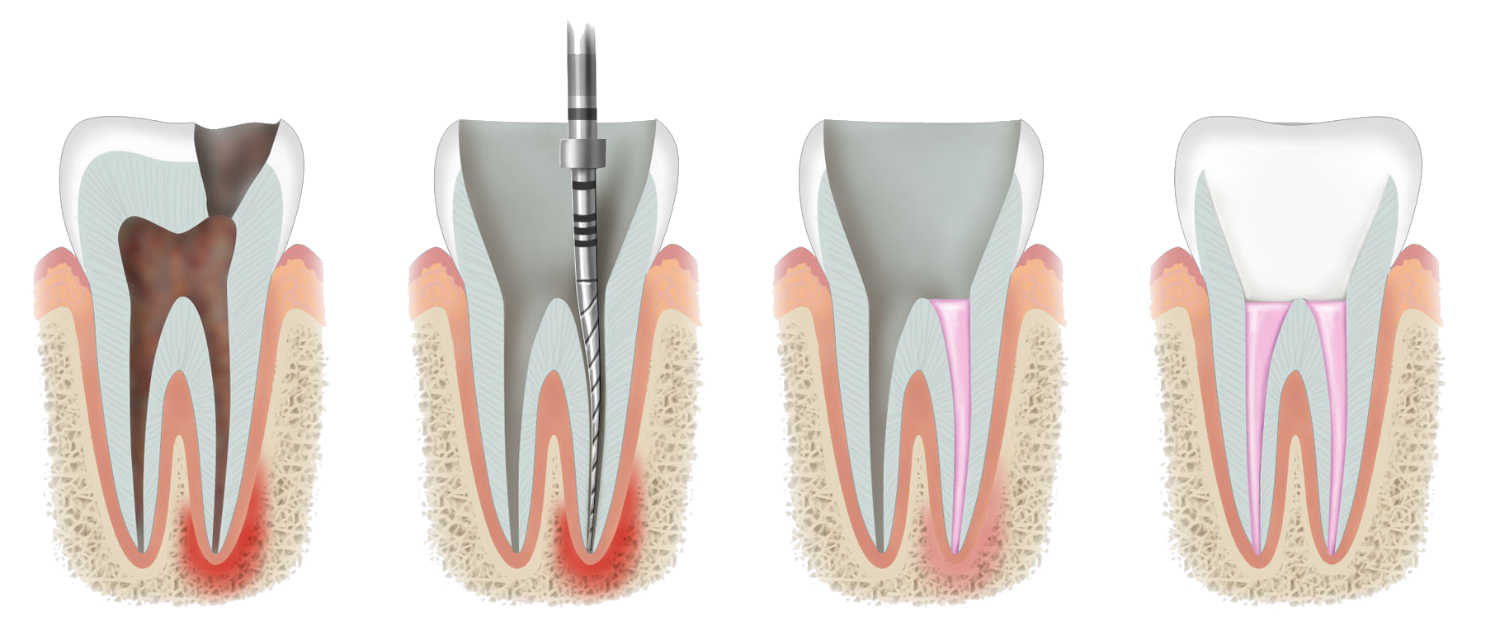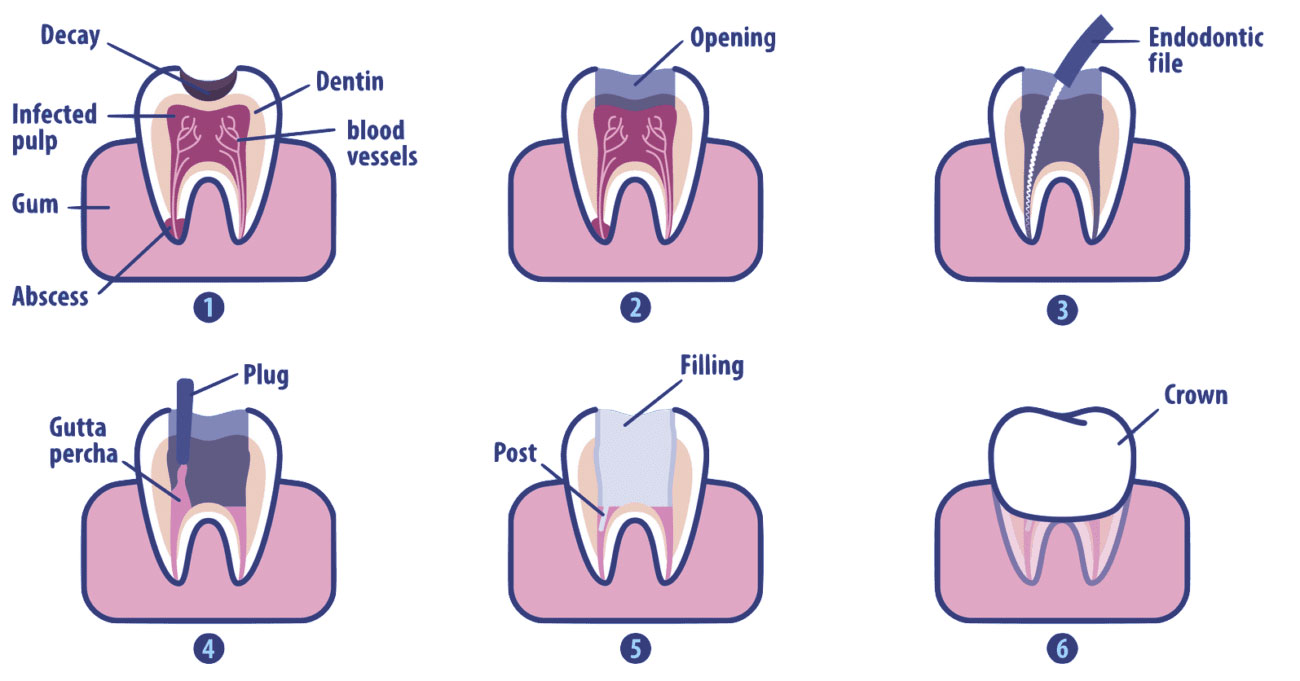Root Canal Treatment (RCT)
What is RCT?
RCT or Root canal treatment is the process opening up the pulp space of the tooth and removing any contaminated, infected and/ or dead tissue. After this is done, the space is disinfected with different solutions and sealed with an inert and biocompatible material.
Who needs a RCT?
If you are exhibiting the following symptoms and signs, you might need a RCT:
- Continuous tooth pain that starts without any apparent stimulus.
- Severe pain while chewing or biting.
- Pimples on the gums.
- A chipped or cracked tooth.
- Lingering sensitivity to hot or cold, even after the sensation has been removed.
- Swollen or tender gums.
- Deep decay or darkening of the teeth.
Why does my tooth continuously hurt?
Every tooth has three layers. The outermost layer is the white enamel; it is the hardest part of the tooth. The second layer is the softer, yellowish dentin and the innermost layer is the Pulp, which is the nerve of the tooth.
If for some reason (like a cavity or a broken tooth) the pulp is exposed to the external environment, the tissue becomes contaminated and starts hurting. To combat this contamination, root canal treatment is performed.
How is it done?
Before starting the procedure, the tooth is properly numbed so that you remain comfortable during the entire length of the treatment. The dentist then creates a small access hole in the tooth to access the contaminated tissue. The diseased and/or dead tissue is then removed using flexible files and irrigating solutions to flush out the debris. Once the entire space has been cleaned and disinfected, it is sealed with a biocompatible material.
Is it painful?
The only pain involved in a RCT is that of the initial numbing injection. Once the tooth is numb, RCT is not painful at all.
What if I don’t get RCT done?
If a tooth with an exposed pulp is left untreated, it may cause the following:
- Extreme pain in the tooth and its surrounding areas including a headache or pain in the ear.
- Swelling in the gums or on the face.
- Pus formation which can extend to the jaw bone or in the space between the facial muscles.
- Pus can start draining in the mouth or on the face through a small opening.
- If RCT is not done on time, then the tooth would have to be eventually extracted.
Do I need anaesthesia for a RCT?
In most cases, a small anaesthetic is required to ensure that the tooth is numb and does not hurt during the procedure.
What can I eat after RCT?
The doctor may ask you to avoid eating anything till the time your anaesthesia hasn’t worn off. This is to ensure that you don’t bite your cheeks, lips or tongue under the affect of the anaesthetic.
After RCT is done, it is advisable to eat soft foods (like bananas, dal and rice, scrambled eggs etc) for the next 24 hours. Take care to not chew hard food on the affected side until your RCT is completed and your tooth is covered with a cap.
What is the home care after my RCT?
Your tooth and surrounding gums may be slightly tender due to tissue manipulation during treatment and the previous condition of your tooth. This is normal and can be easily managed with the prescribed medication.
Is it compulsory to put a cap after RCT?
In most cases, it is advisable to put a cap on a tooth that has undergone a RCT to prevent a crack or fracture in the tooth.
How many sittings does it take?
Usually entire treatment takes about 3-5 sittings. Even if a single sitting RCT is performed, the placement of a cap needs 2 sittings, as every cap is custom made for the patient.
What is the approximate price of RCT?
The approximate charges for RCT at Dr. Pearl’s Dental Studio start at Rs. 2500/-. However, each case is different and the charges for the treatment can vary according to various factors that may increase the complexity of the case. Whatever the treatment cost may be, you will be informed about the entire charges before the process is started.
How to Find Us
Address
F-14/40
Model Town Phase 2
Delhi 110009

